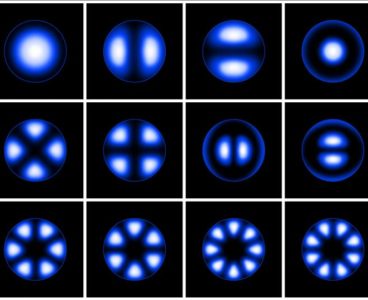Weyl semimetals are a recently discovered class of materials, in which charge carriers behave the way electrons and positrons do in particle accelerators. Researchers from the Moscow Institute of Physics and Technology and Ioffe Institute in St. Petersburg have shown that these materials represent perfect gain media for lasers. The research findings were published in…
Organic Solar Cells Get an Upgrade
An international team of materials scientists from France, Russia, and Kazakhstan found a way to boost the efficiency of organic solar cells several times. The new study, published in the Journal of Materials Chemistry A, has shown that ordered structures based on organic molecules can be used to produce solar power. Solar panels, or batteries,…
Researchers Greenlight Gas Detection at Room Temperature
Russian researchers have developed a mechanism for detecting molecular hydrogen using green light to illuminate a nanocrystalline composite sensor based on zinc and indium oxides. For the first time, this enables a gas sensor operating at room temperature. The paper was published in the journal Scientific Reports. Multisensor arrays for determining gas mixture composition are currently…
Scientists Revisit Optical Constraints of Ultrathin Gold Films
Researchers at MIPT have conducted highly precise measurements of the optical constants of ultrathin gold films with thicknesses ranging from 20 to 200 billionths of a meter in the optical part of the electromagnetic spectrum. Thin gold films are key components of modern micro- and nanoscale optical and optoelectronic devices. The research findings will be…
Researchers Develop Novel Optical Fiber That Preserves Properties of Light
Scientists from the Moscow Institute of Physics and Technology (MIPT) and the Kotelnikov Institute of Radio Engineering and Electronics (IRE) of the Russian Academy of Sciences (RAS), in collaboration with their colleagues from Finland, have developed a new type of optical fiber that has an extremely large core diameter and preserves the coherent properties of…
Researchers Develop Novel Optical Fiber That Preserves Properties of Light
Scientists from the Moscow Institute of Physics and Technology (MIPT) and the Kotelnikov Institute of Radio Engineering and Electronics (IRE) of the Russian Academy of Sciences (RAS), in collaboration with their colleagues from Finland, have developed a new type of optical fiber that has an extremely large core diameter and preserves the coherent properties of…
New Prospects for Universal Memory
Researchers from MIPT’s Center of Shared Research Facilities have found a way to control oxygen concentration in tantalum oxide films produced by atomic layer deposition. These thin films could be the basis for creating new forms of nonvolatile memory. The paper was published in the journal ACS Applied Materials & Interfaces, which has an impact factor…
Study Explores Mystery of Bacterial Adaptation to Antibiotics
An international team including researchers from MIPT’s Laboratory for Advanced Studies of Membrane Proteins have proposed an explanation of the way bacteria process external signals. By identifying the detailed structure of the protein complex used by bacteria, the scientists gained insights into the ability of these microorganisms to detect even small changes in the environment…








